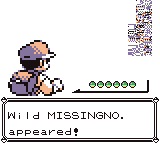Related Research Articles

Anime is hand-drawn and computer-generated animation originating from Japan. Outside Japan and in English, anime refers specifically to animation produced in Japan. However, in Japan and in Japanese, anime describes all animated works, regardless of style or origin. Many works of animation with a similar style to Japanese animation are also produced outside Japan. Video games sometimes also feature themes and artstyles that can be considered as "anime".

A fandom is a subculture composed of fans characterized by a feeling of camaraderie with others who share a common interest. Fans typically are interested in even minor details of the objects of their fandom and spend a significant portion of their time and energy involved with their interest, often as a part of a social network with particular practices, differentiating fandom-affiliated people from those with only a casual interest.

Otaku is a Japanese word that describes people with consuming interests, particularly in anime, manga, video games, or computers. Its contemporary use originated with a 1983 essay by Akio Nakamori in Manga Burikko.
Slash fiction is a genre of fan fiction that focuses on romantic or sexual relationships between fictional characters of the same sex. While the term "slash" originally referred only to stories in which male characters are involved in an explicit sexual relationship as a primary plot element, it is now also used to refer to any fan story containing a romantic pairing between same-sex characters. Many fans distinguish slash with female characters as a separate genre, commonly referred to as femslash.

Mewtwo is a Pokémon species in Nintendo and Game Freak's Pokémon media franchise. It was first introduced in the video games Pokémon Red and Blue, and later appeared in subsequent sequels and spin-off titles, such as Pokkén Tournament. In the video games, the player can fight and capture Mewtwo in order to subsequently pit it against other Pokémon. The player first learns of Mewtwo late in Pokémon Red and Blue by reading research documents left in a ruined laboratory on Cinnabar Island. Mewtwo is regarded as one of the series' strongest Pokémon, and was the strongest in the original games in terms of base statistic distribution. It is known as the "Genetic Pokémon" and is a Legendary Pokémon, a special group of Pokémon that are very rare and usually very powerful. Mewtwo has also appeared in various animated adaptations of the franchise.

Pikachu is a fictional species of the Pokémon media franchise. Designed by Atsuko Nishida and Ken Sugimori, Pikachu first appeared in the 1996 Japanese video games Pokémon Red and Pokémon Green created by Game Freak and Nintendo, which were released outside of Japan in 1998 as Pokémon Red and Pokémon Blue. Pikachu is a yellow, mouse-like creature with electrical abilities. It is a major character in the Pokémon franchise, serving as its mascot and as a major mascot for Nintendo.

Jigglypuff, known in Japan as Purin (プリン), is a Pokémon species. Jigglypuff first appeared in the video games Pokémon Red and Blue and subsequent sequels, later appearing in various merchandise, spinoff titles and animated and printed adaptations of the franchise. Jigglypuff is voiced by Rachael Lillis in English and by Mika Kanai in Japanese. In the live-action musical Pokémon Live!, Jigglypuff is portrayed by Leah Smith. Jigglypuff is also very well known for singing a lullaby in the Pokémon anime series.

Mew is one of the fictional species from the Pokémon franchise. It is a small, pink, Psychic-type Mythical Pokémon, it was added to Pokémon Red and Blue by Game Freak programmer Shigeki Morimoto, with the intent of making it obtainable, but was ultimately left out for development and technical reasons. After being discovered through data mining, its presence in the games was surrounded by many rumors and myths, which would end up contributing to the Pokémon franchise's success. For years, Mew was legitimately unobtainable in the games except some specific Pokémon distribution events or glitching.

The canon of a work of fiction is "the body of works taking place in a particular fictional world that are widely considered to be official or authoritative; [especially] those created by the original author or developer of the world". Canon is contrasted with, or used as the basis for, works of fan fiction and other derivative works.

The Pretty Cure series is a Japanese magical girl anime franchise created by Izumi Todo and produced by ABC Television, Asatsu-DK and Toei Animation. Each series revolves around a group of magical girls known as Pretty Cures who battle against evil forces. Starting in February 2004 with Futari wa Pretty Cure, the franchise has seen many anime series, spanning over 850 episodes to date, as well as spawning movies, manga, toys, and video games. Its most recent iteration, Wonderful PreCure!, began airing in February 2024 as part of TV Asahi's Sunday morning children's television block. As of December 2022, three series have received English adaptations.
Shipping is the desire by followers of a fandom for two or more people, either real-life people or fictional characters, to be in a romantic or sexual relationship. Shipping often takes the form of unofficial creative works, including fanfiction and fan art.
Japanese popular culture includes Japanese cinema, cuisine, television programs, anime, manga, video games, music, and doujinshi, all of which retain older artistic and literary traditions; many of their themes and styles of presentation can be traced to traditional art forms. Contemporary forms of popular culture, much like the traditional forms, are not only forms of entertainment but also factors that distinguish contemporary Japan from the rest of the modern world. There is a large industry of music, films, and the products of a huge comic book industry, among other forms of entertainment. Game centers, bowling alleys, and karaoke parlors are well-known hangout places for teens while older people may play shogi or go in specialized parlors. Since the end of the US occupation of Japan in 1952, Japanese popular culture has been influenced by American media. However, rather than being dominated by American products, Japan localised these influences by appropriating and absorbing foreign influences into local media industries. Today, Japanese popular culture stands as one of the most prominent and influential popular cultures around the world.
The yaoi fandom consists of the readers of yaoi, a genre of male homosexual narratives. Individuals in the yaoi fandom may attend conventions, maintain/post to fansites, create fanfiction/fanart, etc. In the mid-1990s, estimates of the size of the Japanese yaoi fandom were at 100,000–500,000 people. Despite increased knowledge of the genre among the general public, readership remains limited in 2008. English-language fan translations of From Eroica with Love circulated through the slash fiction community in the 1980s, forging a link between slash fiction fandom and yaoi fandom.
Transmedia storytelling is the technique of telling a single story or story experience across multiple platforms and formats using current digital technologies.

Fan fiction or fanfiction is fictional writing written in an amateur capacity by fans, unauthorized by, but based on an existing work of fiction. The author uses copyrighted characters, settings, or other intellectual properties from the original creator(s) as a basis for their writing. Fan fiction ranges from a couple of sentences to an entire novel, and fans can retain the creator's characters and settings and/or add their own. It is a form of fan labor. Fan fiction can be based on any fictional subject. Common bases for fan fiction include novels, movies, comics, musical groups, cartoons, anime, manga, and video games.
The anime and manga fandom is a worldwide community of fans of anime and manga. Anime includes animated series, films and videos, while manga includes manga, graphic novels, drawings, and related artworks. The anime and manga fandom traces back to the 1970s, with numerous countries such as the United States, the United Kingdom, France, Italy, Spain, Germany, Japan, China, and Malaysia participating in it.

MissingNo. is a glitch and an unofficial Pokémon species found in the video games Pokémon Red and Blue. Due to the programming of certain in-game events, players can encounter MissingNo. via a glitch. It is one of the most famous video game glitches of all time. Encountering MissingNo. causes graphical anomalies and changes gameplay by increasing the number of items in the sixth entry of the player's inventory by 128.
There is significant awareness of Japanese popular culture in the United States. The flow of Japanese animation, fashion, films, manga comics, martial arts, television shows and video games to the United States has increased American awareness of Japanese pop culture, which has had a significant influence on American pop culture, including sequential media and entertainment into the 21st century.

The following outline is provided as an overview of and topical guide to science fiction:

Pokémon is a media franchise owned by Nintendo that started in 1996. It has received fan-made pornography since at least 1999, when an artist was arrested for producing erotic doujinshi of the characters.
References
- ↑ Keiles, Jamie Lauren (December 1, 2022). "'Avatar' and the Mystery of the Vanishing Blockbuster - It was the highest-grossing film in history, but for years it was remembered mainly for having been forgotten. Why?". The New York Times Magazine . Retrieved December 3, 2022.
- ↑ Lemke, Jay (2004). "Critical Analysis across Media: Games, Franchises, and the New Cultural Order" (PDF). First International Conference on CDA. Archived (PDF) from the original on 19 October 2013. Retrieved 16 September 2013.
- ↑ Fuschillo, Gregorio (2018-05-04). "Fans, fandoms, or fanaticism?". Journal of Consumer Culture. 20 (3): 347–365. doi:10.1177/1469540518773822. ISSN 1469-5405. S2CID 150052589.
- ↑ Wilkins, Kim (2019-07-11). Young Adult Fantasy Fiction. Cambridge University Press. doi:10.1017/9781108551137. ISBN 978-1-108-55113-7. S2CID 199244984.
- ↑ Jenkins, Henry (December 2010). "Transmedia Storytelling and Entertainment: An annotated syllabus". Continuum. 24 (6): 943–958. doi:10.1080/10304312.2010.510599. ISSN 1030-4312. S2CID 143801652.
- ↑ McErlean, Kelly (2018-03-05). Interactive Narratives and Transmedia Storytelling. doi:10.4324/9781315637570. ISBN 9781315637570.
- ↑ Aarseth, Espen (2006). "The Culture and Business of Cross-Media Productions". Popular Communication. 4 (3): 203–211. doi:10.1207/s15405710pc0403_4. S2CID 46602603.
- 1 2 Jenkins, Henry (2006). Convergence Culture: Where Old and New Media Collide . NYU Press. p. 61. ISBN 9780814742815.
- ↑ Click, Melissa (2010). Bitten by Twilight: Youth Culture, Media, and the Vampire Franchise. Peter Lang Publishing. p. 12. ISBN 978-1433108945.
- ↑ Palumbo, Donald (1998). "Asimov's Crusade Against Bigotry: The Persistence Of Prejudice as a Fractal Motif in the Robot/Empire Foundation Metaseries". Journal of the Fantastic in the Arts. 10: 43–63.
- ↑ Barry Langford, Post-classical Hollywood: Film Industry, Style and Ideology Since 1945, p. 207, ISBN 074863858X.
- 1 2 Harvey, Colin B. (2015), "Transmedia Memory", Fantastic Transmedia, London: Palgrave Macmillan UK, pp. 182–202, doi:10.1057/9781137306043_9, ISBN 978-1-349-45500-3 , retrieved 2022-11-23
- ↑ Bourdaa, Mélanie (2018-03-14). "From One Medium to the Next: How Comic Books Create Richer Storylines". M/C Journal. 21 (1). doi: 10.5204/mcj.1355 . ISSN 1441-2616.
- 1 2 Henry Jenkins, Convergence Culture: Where Old and New Media Collide, p. 110
- 1 2 Steinberg
- ↑ Denison, Rayna. "Manga Movies Project Report 1 - Transmedia Japanese Franchising". Academia.edu. Retrieved 2015-07-31.
- 1 2 Steinberg, p. vi
- ↑ SAITO, SATOMI (2015-12-20), "Beyond the Horizon of the Possible Worlds", Mechademia 10, University of Minnesota Press, pp. 143–161, doi:10.5749/j.ctv1rdv223.14, ISBN 9781452949833 , retrieved 2022-11-23
- 1 2 Bainbridge, Jason (2013-10-25). "'It is a Pokémon world': The Pokémon franchise and the environment". International Journal of Cultural Studies. 17 (4): 399–414. doi:10.1177/1367877913501240. ISSN 1367-8779. S2CID 144360372.
- ↑ Marazi, Katerina (2014-12-01). "Brand Identity, Adaptation, and Media Franchise Culture". Acta Universitatis Sapientiae, Film and Media Studies. 9 (1): 229–242. doi: 10.1515/ausfm-2015-0012 . S2CID 56267324.
- ↑ Månsson, Maria; Buchmann, Annæ; Cassinger, Cecilia; Eskilsson, Lena, eds. (2020-07-07). The Routledge Companion to Media and Tourism. doi:10.4324/9780429430398. ISBN 9780429430398. S2CID 213642766.
- ↑ Mayer, Hervé (2020-03-20). "Disney's Star Wars: Forces of Production, Promotion, and Reception. William Proctor and Richard McCulloch (eds.). Iowa City: University of I". Caliban (63). doi: 10.4000/caliban.8195 . ISSN 2425-6250. S2CID 251029975.
- ↑ Bernstein, Joseph (12 August 2013). "How To Kill A Major Media Franchise In A Decade". Buzzfeed. Retrieved 16 September 2013.
- 1 2 Kackman, Michael; Kearney, Mary Celeste, eds. (2018-06-22). The Craft of Criticism. doi:10.4324/9781315879970. ISBN 9781315879970.